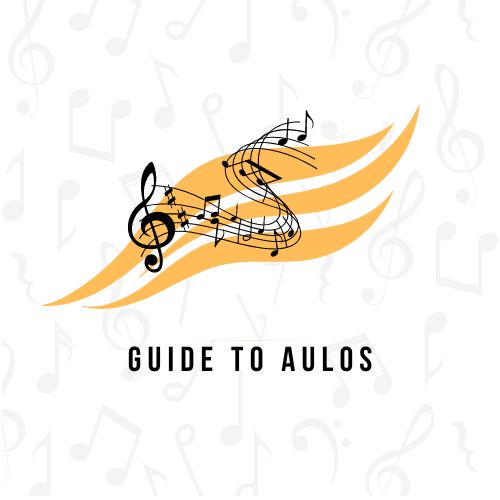An aulos (pl. auloi), also known as tibia in Latin, is an ancient Greek wind instrument that is most commonly depicted in arts. This wind instrument was played by an aulete or aulist, a musician who plays the aulos. Meanwhile, a singer who sang the accompaniment to a piece played on the aulos is called aulode. The aulos is an instrument that has a resemblance to the Tibicen, a pipe instrument of the ancient Roman. It was the usual instrument played in Greek festivals, births, deaths, and processions, as well as in athletic games, social occasions, and tragedy performances in the Greek theatre. Additionally, the aulos is associated with the god, Dionysus.
Aside from its popularity in music, aulos was also depicted in arts such as in the Chigi Vase and Herakles in his tenth labor in the amphora jar. In the Chigi Vase, a battle scene was depicted, while several auletes were setting a rhythm for the phalanx to advance to. Also,in another artifact called amphora, several auletes were seen going around the neck of the amphora jar.
The auloi, plural of aulos, were made out of cane, ivory, bone, and occasionally bronze and copper. These auloi have a circular pipe that fitted with about one to three mouthpieces, which gives this instrument a different pitch. Also, the pipe could have up to five interlocking sections. In playing the aulos, music is produced by blowing and vibrating a single or double reed within the mouthpiece. The pipes of the auloi usually have seven holes. However, another hole could be added to produce another octave of notes. When it comes to adjusting the tonality, bronze rings between the mouthpiece and the pipe could be turned.Most frequently, two auloi were used and fitted together in a mouthpiece to produce a harmonic double melody. The sound it produces was rhythmical and often associated with a male chorus.
According to the archeological findings, through the iconography and several other evidence, it was indicated that the aulos was a double-reeded wind instrument, much like an oboe. Moreover, there were different kinds of aulos, although the most common variety is a reed instrument.The single pipe aulos without a reed is called a monaulos. Meanwhile, an aulos that was played horizontally like a flute was called plagiaulos. In addition to that, there was also an askaulos, an aulos that has a bag that allows the continuity of the sound, much like a bagpipe. Although it was sometimes called a flute, the auloi shared similarities to the bagpipe’s chanter and drone. Similar to the Great Highland Bagpipe, the aulos was also used for several social settings.
Furthermore, Plato associated this instrument with the cult of Dionysus, the god of fertility, and the Korybantes, the dancers who worshipped the goddess Cybele. Consequently, the instrument was banned from Plato’s Republic. However, the aulos was then reintroduced in his later dialogue, The Laws. Some variants of the aulos were loud, shrill, and hard to blow when it comes to sound. With that, it was supported by a leather strap, called phorbeia, worn horizontally around the head with a hole in the mouth. This strap was also used to help the aulete avoid the excessive strain in cheeks due to the continuous blowing of the instrument. Sometimes, a second strap was used to support and prevent the phorbeia from slipping down. In the literature depiction, most aulete has puffed cheeks.
In playing the aulos, the circular breathing technique is mostly used. Through this technique, the sound of the aulos will be continuous. During the earlier years, aulos was used by the aristocrats in their leisure. However, during the 5th century, the aulos was mostly associated with professional musicians. Consequently, a Romano-Greek writer named Lucian had mentioned the aulos in his dialogue, Harmonides.
In there, Alexander the Great’s aulete named Timotheus discusses fame with his student, Harmonides. Timotheus advises Harmonides to impress the experts with his profession, rather than to seek popularity in prominent public venues. Timotheus also added that if leading musicians admire him, popular approval will then follow. Unfortunately, in the dialogue written by Lucian, it was reported that Harmonides died from excessive blowing of the aulos.


